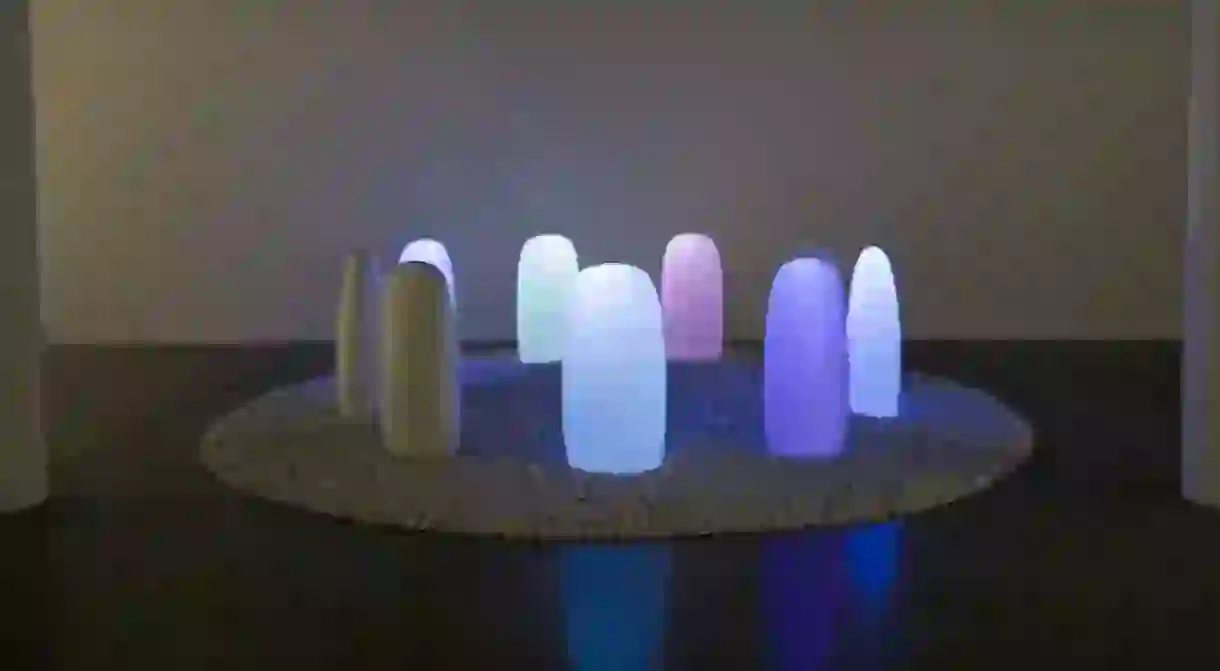Rebirth: Mariko Mori At The Royal Academy

For most of us, LEDs are just a curious gizmo – an eco-friendly light bulb that emits an unusual pale blue light. The exhibition Rebirth by Japanese contemporary artist Mariko Mori at London’s Royal Academy of Arts, however, makes us realise how advanced LED technology is and how it can achieve stunning artistic visions. In this article, Culture Trip recounts her visit to the exhibition.
As you enter Mariko Mori’s exhibition Rebirth, you are surrounded by a panorama of ultramodern and beguiling objects. The first installation that immediately draws the eye is a series of monoliths made of glass entitled Transcircle 1.1. Their shapes resemble a circle of standing stones such as the Ring of Brodgar in Orkney, Scotland and the Stone Circle in Atika, in the north east of Japan. The exhibition continues with one of the highlights of Rebirth, a monolith entitled Tom Na H-Iu II. The inspiration for this piece came from the Japanese prehistoric period of Jōmon and Celtic traditions in Europe. It is named after a mythological Celtic realm where the souls of the dead linger for thousands of years, waiting to be born again.
The monoliths are attached to a computer and emit a vaporous light that constantly and continuously changes colour (from purple to yellow, from green to blue and so on). This is triggered by the live data fed from Kamioka Observatory (Super Kamiokande), a neutrino physics laboratory in Japan. Neutrinos are emitted in vast quantities during the explosive death of a star and Mariko’s work visualises information from this Super Kamiokande neutrino detector. The LED bulbs within the monoliths therefore represent Mori’s image of ‘light of death’ interactively and reflect these interstellar forces whilst also engaging with pagan mythology.
The latter part of Rebirth is a collaborative installation between Mori and the Japanese architect Kengo Kuma entitled White Hole. In it, a large white dome is formed by polyurethane foam, which is normally used as building insulation. The unique feature of polyurethane is that once sprayed, it expands up to 100 times its initial volume; 99% of it consists of air and 1% of polyurethane. The name ‘White Hole’ is based on the opposing force of a black hole’s absorption of material, a place where stars are born. The LEDs placed overhead are linked to the observatory of the University of Kyoto, which is known for its advanced research in the field of Stellar Physics. The installation expresses Mori’s interpretations of birth and death of stars as well as her belief in the cycle of life and the balance of the universe.
Drawing from ancient rituals and symbols, Mori uses cutting-edge technology and materials to create striking visions for the 21st century. Her LEDs are used not only as lighting devices, which create a specific atmosphere with their bright light or diverse colours, but thanks to their fast data transfer capability and their easy-to-control beams, LEDs offer a creative resource for the artistic imagination. Mori’s Rebirth left visitors feeling hopeful about the future of technology and arts and enamoured by her ability to connect cutting-edge technologies with ancient, mythical concepts. From this, we can draw on the idea that technology can act as a vehicle for spirituality, that there is still room for sublime wonder in our media-saturated world.
Mariko Mori was born in 1967 in Tokyo. Since her first exhibition in the mid-1990s, her works have been mainly photography, video and mixed media installations whose concepts are rooted deeply in both traditional and contemporary Japanese culture and Japanese identity – from Shintoism and Buddhism to Manga, Cosplay and cyber culture. Mori’s recent creations have been inspired by her fascination with ancient cultures. She has been living in New York since the early 1990s.













